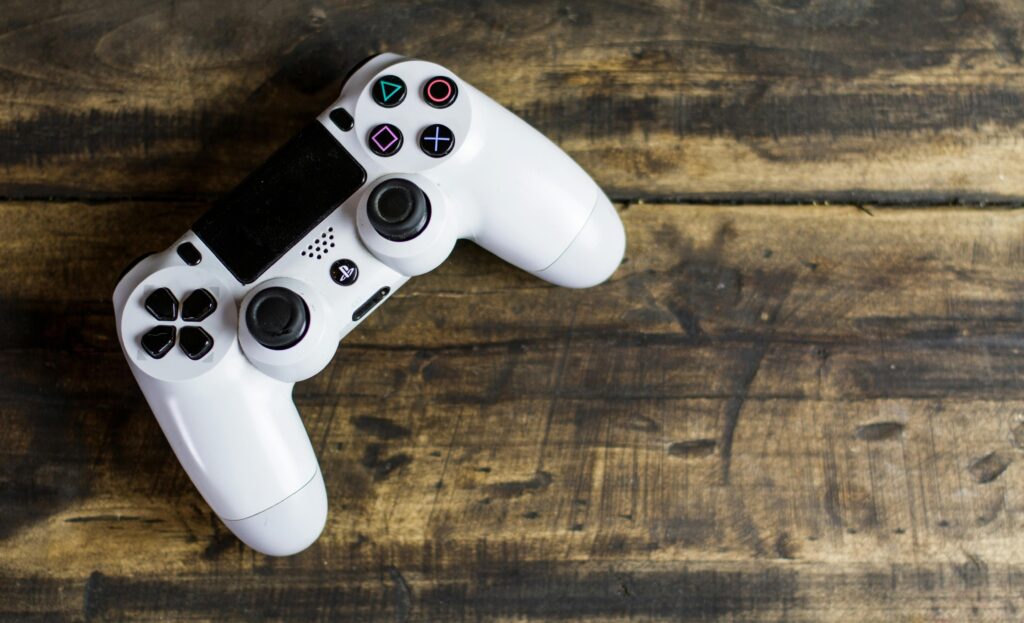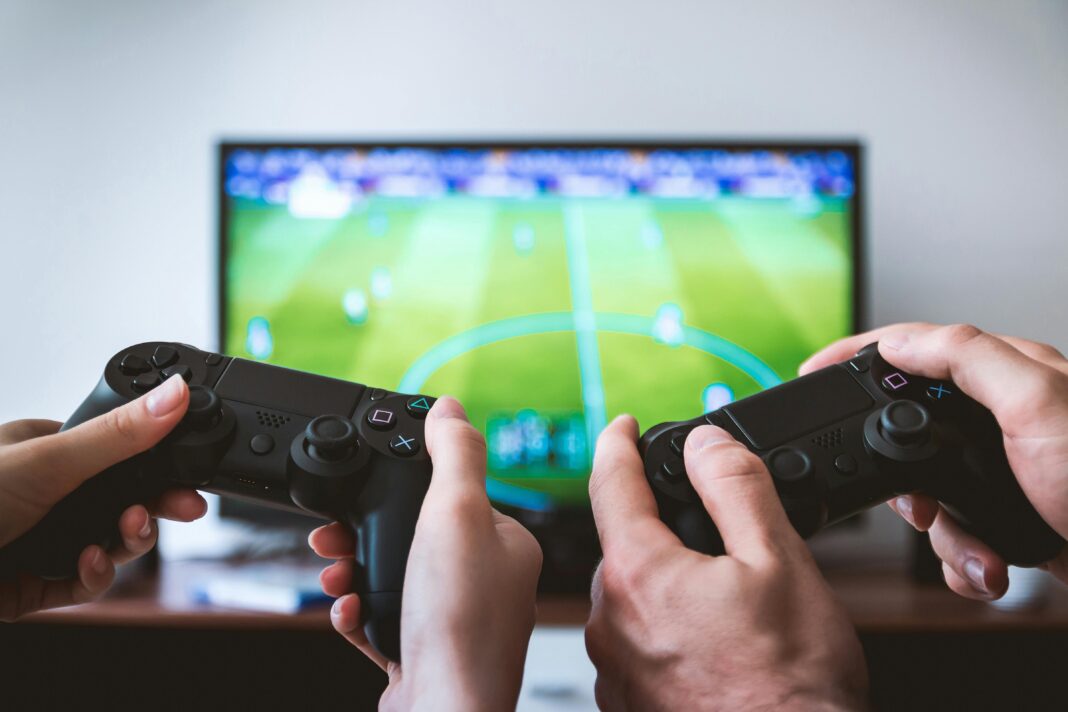Competitive gaming has transformed from a casual pastime into a legitimate career path with million-dollar tournaments, professional teams, and global recognition. Whether you dream of lifting championship trophies or simply want to test your skills against the best, this comprehensive guide will walk you through every step of becoming a competitive gamer. We’ll cover game selection, skill development, equipment setup, tournament strategies, and the business side of esports – all without relying on clichés or filler content.

1. Choosing Your Competitive Game: Finding the Right Fit for Your Skills
The foundation of your competitive gaming journey begins with selecting the right title to master. This decision impacts everything from your training regimen to your potential earnings.
Understanding Different Esports Genres
First-person shooters (FPS):
- Tactical shooters (CS2, Valorant): Demand precise aim, strategic positioning, and team coordination
- Battle royales (Fortnite, Apex Legends): Combine shooting skills with survival strategy
- Arena shooters (Quake Champions): Focus on movement mechanics and weapon control
Multiplayer online battle arenas (MOBAs):
- League of Legends: Fast-paced with over 160 champions to master
- Dota 2: Deeper strategic complexity with higher skill ceiling
- Smite: Unique third-person perspective with action combat
Fighting games:
- Street Fighter 6: Technical execution with frame-perfect combos
- Tekken 8: Complex movement and juggle mechanics
- Super Smash Bros. Ultimate: Platform fighter with unique mechanics
Real-time strategy (RTS):
- StarCraft II: The most demanding 1v1 esport requiring 300+ actions per minute
- Age of Empires IV: Slower-paced but deeply strategic
Sports and racing:
- Rocket League: Soccer with rocket-powered cars requiring aerial control
- FIFA: Annual releases with constantly evolving meta
Key Factors in Game Selection
Player base and longevity:
- Established titles (CS2, LoL) offer stability but intense competition
- Newer games (XDefiant, The Finals) provide fresh opportunities but uncertain futures
Hardware requirements:
- High-end PCs needed for competitive FPS games (240Hz monitors ideal)
- Fighting games can be played on moderate systems or consoles
- Some mobile games (PUBG Mobile, Arena of Valor) have thriving competitive scenes
Regional popularity:
- League of Legends dominates in Asia and North America
- CS2 has stronger European and CIS player bases
- Mobile esports are biggest in Southeast Asia
Monetization potential:
- Tier 1 esports (Dota 2, LoL) have multi-million dollar prize pools
- Fighting game tournaments typically offer smaller but more frequent prizes
- Streaming potential varies by game popularity
Personal aptitude:
- Fast reflexes favor FPS and fighting games
- Strategic thinkers excel in MOBAs and RTS
- Team players thrive in squad-based games
Actionable Advice:
- Create a shortlist of 3-5 potential games
- Play each for at least 20 hours to gauge enjoyment and aptitude
- Research the competitive scene for each (tournament frequency, prize pools)
- Consider streaming potential if content creation interests you
- Evaluate hardware requirements against your current setup
2. Building Competitive Fundamentals: From Casual to Competitive Mindset
Transitioning from casual play to competitive requires a complete overhaul of how you approach gaming. This section breaks down the essential skills across all competitive titles.
Mechanical Skill Development
Aim training (for shooters):
- Raw aim: Static target drills (Gridshot in Aim Lab)
- Tracking: Smooth following of moving targets
- Flicking: Quick, precise cursor movements
- Target switching: Engaging multiple enemies efficiently
Recommended routines:
- 30 minutes daily of focused aim training
- Combine with in-game deathmatch practice
- Gradually increase difficulty as skills improve
Movement mechanics:
- Strafing and counter-strafing (CS2, Valorant)
- Bunny hopping and slide mechanics (Apex Legends)
- Wave dashing and platform movement (fighting games)
Keybinding optimization:
- Ergonomic hand positioning for prolonged play
- Minimal finger movement between critical actions
- Consistent bindings across similar games
Game Knowledge and Strategy
Map mastery:
- Callout memorization (every angle and position name)
- Spawn points and timing (CS2, Valorant)
- Power position control (high ground, choke points)
Meta understanding:
- Current patch notes and balance changes
- Tier lists for characters/weapons
- Popular strategies and counter-strategies
Economy management:
- Buy rounds vs. save rounds (tactical shooters)
- Itemization paths (MOBAs)
- Resource allocation (RTS games)
Mental Performance
Tilt prevention:
- Recognizing frustration triggers
- Implementing pre-game routines
- Cognitive reframing techniques
Focus training:
- Eliminating distractions during sessions
- Mindfulness exercises for concentration
- Managing adrenaline in high-pressure situations
VOD review methodology:
- Identifying recurring mistakes
- Comparing to professional play
- Creating improvement checklists
Advanced Training Techniques:
- Deliberate practice vs. autopilot grinding
- Using training maps/mod tools
- Finding practice partners of slightly higher skill
- Setting measurable performance benchmarks
3. The Complete Competitive Gaming Setup
Your hardware and environment significantly impact performance. This section details optimal setups across budget ranges.
PC Hardware Breakdown
Processor (CPU):
- Intel i7/i9 or AMD Ryzen 7/9 for high FPS
- Core count vs. clock speed considerations
Graphics Card (GPU):
- NVIDIA RTX 4070+ for competitive settings
- AMD alternatives for budget builds
- Driver optimization for specific games
Memory:
- 32GB DDR5 for modern titles
- Low latency timings for competitive edge
Storage:
- NVMe SSDs for fastest load times
- Separate drive for game recordings
Peripheral Selection Guide
Monitors:
- 240Hz+ refresh rate for FPS
- 1ms response time critical
- Size vs. performance tradeoffs
- Panel type (IPS vs. TN) considerations
Keyboards:
- Mechanical switches (linear vs. tactile)
- Tenkeyless vs. full-size layouts
- Custom keyboard advantages
Mice:
- Sensor quality and DPI ranges
- Shape and weight preferences
- Grip style (palm, claw, fingertip) matching
Headsets:
- Open-back vs. closed-back
- Soundstage for positional audio
- Microphone quality for comms
Ergonomics and Health
Desk setup:
- Proper monitor height and distance
- Arm positioning for mouse and keyboard
- Cable management solutions
Chair selection:
- Lumbar support requirements
- Adjustable armrest importance
- Breathable materials for long sessions
Health maintenance:
- Wrist and hand exercises
- Eye strain reduction techniques
- Posture correction methods
Budget Optimization Tips:
- Prioritize monitor and mouse first
- Used market opportunities
- Future upgrade pathways
4. From Ranked Grind to Tournament Play
This section provides a roadmap for transitioning from online matchmaking to organized competition.
Ranked Play Optimization
Mental approach:
- Treating every match as tournament prep
- Emotional detachment from results
- Focus on incremental improvement
Queue strategies:
- Best times to play for quality matches
- Duo vs. solo queue considerations
- Dodging unfavorable matches
Climbing efficiently:
- Identifying and fixing major weaknesses
- Specializing vs. flexing roles
- Adapting to meta shifts
Amateur Tournament Circuit
Online tournaments:
- Platform comparisons (FaceIt, ESEA, Battlefy)
- Free vs. paid entry events
- Building reputation in small tournaments
LAN experience:
- Local event finder strategies
- Travel considerations
- Equipment transportation
Team formation:
- Finding compatible teammates
- Role specialization
- Practice scheduling
Going Semi-Pro
Scrim culture:
- Finding practice partners
- VOD review sessions
- Developing team strategies
Analyst roles:
- Opponent research
- Draft/ban phase preparation
- Meta analysis
Sponsorship basics:
- Building media presence
- Creating sponsorship decks
- Negotiating contracts
5. The Business of Competitive Gaming
Turning skills into income requires understanding the esports ecosystem.
Revenue Streams
Tournament winnings:
- Tax implications
- Team cuts and agreements
- Payment schedules
Content creation:
- Platform selection (Twitch vs. YouTube)
- Editing and production basics
- Algorithm optimization
Coaching:
- Pricing structures
- Teaching methodologies
- Client acquisition
Sponsorships:
- Equipment partnerships
- Brand ambassador roles
- Social media requirements
Career Longevity
Skill maintenance:
- Adapting to game updates
- Preventing burnout
- Cross-training benefits
Networking:
- Industry event participation
- Social media engagement
- Mentorship opportunities
Transition planning:
- Broadcasting careers
- Team management roles
- Developer positions
6. Advanced Competition Preparation
For those ready to compete at high levels.
Tournament Specifics
Pre-event routines:
- Tapering practice intensity
- Sleep schedule adjustment
- Nutrition planning
On-site strategies:
- Warm-up routines
- Equipment checks
- Opponent research
Mental preparation:
- Pressure management
- Focus techniques
- Error recovery
Team Dynamics
Communication systems:
- Callout standardization
- Shotcalling hierarchy
- Conflict resolution
Role specialization:
- In-game leadership
- Support roles
- Entry fraggers
Practice regimens:
- Structured scrim blocks
- Theorycrafting sessions
- Opponent-specific prep
7. Health and Wellness for Gamers
Sustaining peak performance requires physical care.
Physical Maintenance
Hand/wrist care:
- Stretching routines
- Strengthening exercises
- Injury prevention
Posture correction:
- Desk ergonomics
- Mobility work
- Equipment adjustments
Eye health:
- Blue light management
- Focus exercises
- Monitor settings
Mental Health
Stress management:
- Performance anxiety
- Loss streaks
- Community toxicity
Work/life balance:
- Scheduling techniques
- Offline activities
- Social connections
Burnout recovery:
- Warning signs
- Rehabilitation approaches
- Preventative measures
8. The Path to Professional Play
Making the final leap requires exceptional dedication.
Talent Identification
Scouting processes:
- Ranked ladder prominence
- Tournament performances
- Tryout opportunities
Academy teams:
- Development systems
- Promotion pathways
- Contract considerations
Professional Team Life
Daily schedules:
- Practice requirements
- Media obligations
- Physical training
Team contracts:
- Salary structures
- Performance clauses
- Sponsorship splits
Career management:
- Agent selection
- Brand building
- Financial planning
FAQ Section
Q: How many hours do pro gamers practice daily?
A: Most professionals train 8-12 hours daily, combining solo queue, team practice, VOD review, and physical conditioning. However, quality of practice matters more than raw hours.
Q: What’s the best age to start competitive gaming?
A: While many pros start as teenagers, successful players have emerged at all ages. Younger players often have more time to dedicate, while older competitors bring strategic maturity.
Q: Can I compete without expensive equipment?
A: While top-tier gear helps, skill matters most. Many pros started with basic setups. Prioritize a good mouse and monitor first, then upgrade other components.
Q: How do I balance gaming with school/work?
A: Create a strict schedule with dedicated practice blocks. Focus on efficient, deliberate practice rather than marathon sessions. Many top players maintained other commitments early in their careers.
Q: What separates good players from great ones?
A: Consistency, adaptability, and mental resilience differentiate elite competitors. The ability to perform under pressure and quickly learn from mistakes is more important than raw mechanical skill.
Conclusion
Becoming a competitive gamer requires more than natural talent – it demands systematic training, strategic planning, and professional dedication. By following this comprehensive roadmap, you’ll develop the skills, knowledge, and mindset needed to compete at the highest levels. Remember that every professional player started as a beginner, and consistent, intelligent effort will separate you from the competition.
Your Competitive Gaming Journey Starts Now:
- Commit to your chosen game
- Establish a structured training routine
- Begin tracking measurable progress
- Enter your first tournaments
- Continuously refine your approach

